Devario malabaricus
Giant 'Danio'
SynonymsTop ↑
Danio malabaricus (Jerdon, 1849); Perilampus malabaricus Jerdon, 1849; Danio micronema Bleeker, 1863; Eustira ceylonensis Günther, 1868; Paradanio aurolineatus (Day, 1865); Perilampus aurolineatus Day, 1865; Perilampus canarensis Jerdon, 1849; Perilampus mysoricus Jerdon, 1849
Etymology
Devario: appears to be derived from a local vernacular name for the type species of the genus Cyprinus (now Devario) devario Hamilton, 1822.
malabaricus: named for Malabar District, an ex-administrative district of Madras Presidency in British India and Madras State in modern India, and type locality of the species.
Classification
Order: Cypriniformes Family: Cyprinidae
Distribution
Described from ‘Malabar, India’ and currently accepted to range throughout the Indian peninsula and Sri Lanka, though in reality it may be confined to western-flowing drainages of India, and possibly even to the state of Kerala (R. Kumar, pers. comm.).
The precise extent of its range is only likely to be solved with further study.
Habitat
Inhabits hill streams and upper parts of small rivers containing clear, well-oxygenated water with substrates of gravel and variably-sized rocks and some marginal or over-hanging vegetation.
Water flow, volume and turbidity are highly variable depending on time of year, and some populations survive in remnant pools during the dry season.
In the Cauvery River, Karnataka state, southern India sympatric species include Barilius gatensis, Puntius bimaculatus, Pethia conchonius, Rasbora daniconius, Schistura semiarmatus, Lepidocephalichthys thermalis, Aplocheilus blockii, A. lineatus, A. panchax, Badis sp., Channa gachua, C. punctata, Glossogobius giuris, Mastacembelus armatus, Oryzias dancena, and Parambassis ranga.
Maximum Standard Length
70 – 80 mm.
Aquarium SizeTop ↑
An aquarium with base dimensions of 120 ∗ 45 cm or equivalent should be the minimum considered.
Maintenance
Not difficult to keep in a well-maintained aquarium. It’s likely to thrive in an aquarium set up resemble a flowing stream or river with a substrate of variably-sized, water-worn rocks, sand, fine gravel and perhaps some small boulders.
This can be further furnished with driftwood roots or branches, and while the majority of aquatic plants will fail to thrive in such surroundings hardy types such as Microsorum, Bolbitis or Anubias spp. can be grown attached to the décor.
Since it naturally occurs in pristine habitats it’s probably intolerant to accumulation of organic pollutants and requires more-or-less spotless water in order to thrive.
Though very fast flow is unnecessary it also prefers a relatively high proportion of dissolved oxygen and moderate water movement.
Weekly water changes of 30-50% volume should be considered routine, and the tank must have a very tightly-fitting cover as all Devario spp. are accomplished jumpers.
Water Conditions
Temperature: 18 – 25 °C
pH: 6.0 – 8.0
Hardness: 36 – 268 ppm
Diet
Almost certain to prey chiefly on insects and their larvae in nature though in captivity it’s far from selective and easily-fed.
A good quality dried product can be used as the staple diet but this should be supplemented with regular meals of small live and frozen fare such as bloodworm, Daphnia, Artemia, etc., for the best colouration and conditioning.
Behaviour and CompatibilityTop ↑
Not an aggressive fish but may upset slow-moving or timid tankmates with its constant activity and vigorous feeding behaviour, and is therefore most appropriate for larger aquaria containing robust, similarly-sized fishes.
There are plenty of suitable choices including many cyprinids, loaches, cichlids, catfishes and characins, although as always when selecting a compatible community of fish proper research is essential.
It’s a schooling species by nature and ideally should be kept in a group of at least 8-10 specimens which will not only make the fish less nervous but result in a more effective, natural looking display.
Any aggression will also be contained as the fish concentrate on maintaining their hierarchical position within the group, and males tend to display better colours in the presence of rivals.
Sexual Dimorphism
Sexually mature females should be rounder-bellied, less colourful and a little larger than males.
Reproduction
Like most small cyprinids Devario spp. are egg-scattering free spawners exhibiting no parental care.
When in good condition they will spawn often and in a well-planted, mature aquarium it’s possible that small numbers of fry may start to appear without intervention.
However if you want to maximise yield a more controlled approach is required.
The adult group can still be conditioned together but a smaller tank with a base measuring at least 60 cm x 30 cm should also be set up and filled with mature water.
This should be very dimly lit and the base covered with some kind of mesh of a large enough grade so that the eggs can fall through but small enough so that the adults cannot reach them. The widely available plastic ‘grass’-type matting can also be used and works well, as does a layer of glass marbles.
Alternatively filling much of the tank with a fine-leaved plant such as Taxiphyllum spp. or spawning mops can also return decent results.
The water itself should be of slightly acidic to neutral pH with a temperature towards the upper end of the range suggested above, and an air-powered sponge filter or air stone(s) should also be included to provide oxygenation and water movement.
When the adults are well-conditioned and the females appear gravid one or two pairs should then be introduced.
If ready spawning usually taking place within 24 hours, with the female tending to appear noticeably slimmer after the event, and after 48 hours the adults should be removed whether this is observed or not.
Incubation is temperature-dependant to an extent but typically lasts 24-36 hours with the young free-swimming a few days later.
Initial food should be Paramecium or similar, introducing Artemia nauplii, microworm, powdered dry foods, etc. once the fry are large enough to accept them.
NotesTop ↑
Genetic and morphological data has revealed the fish in the aquarium trade which is usually referred to as ‘giant danio’ and labelled with the scientific name D. aequipinnatus in the majority of older aquarium literature is actually D. malabaricus (R. Collins, pers. comm.).
These two nominal species are frequently confused but their identitities are in a state of disarray, particularly that of the latter since the drawing accompanying the original description by McClelland depicts a fish with a deeply-forked caudal-fin but completely plain colour pattern and no reference to any caudal-fin patterning or stripes on the bod.
D. malabaricus possesses a moderately deep body, 35-38 scales in the lateral series, at least 15 rays in the unpaired fins, a complex axial skeleton, a vertically-extended cleithral marking and a P stripe that extendeds to the fork of the caudal-fin, whereas D. aequipinnatus probably has a less deep body, 31-34 scales in the lateral series, 13 rays in the unpaired fins, a well-defined, rounded cleithral marking and a P stripe that probably does not extend into the caudal-fin, rather terminating at its base.
The two are also separated in a geographical sense, D. malabaricus native to the Indian peninsula and D. aequipinnatus inhabiting the Brahmaputra River system in northeastern India.
D. malabaricus is one of a group of similar-looking, deep-bodied congeners with a blue-and-yellow colour pattern alongside D. anomalus, D. assamensis, D. devario, D. ostreographus and D. regina among other nominal species.
In recent years it’s become commonplace to refer to the stripes on the body and fins of danionins as follows:
– P stripe: or ‘pigment stripe‘ is the central, dark, lateral stripe on the body which extends into the caudal-fin in some species. Stripes above it are numbered P+1, P+2, etc. and those beneath P-1, P-2, P-3.
– A stripe: the central stripe on the anal-fin; the proximal stripe (above it) is A+1 and the distal stripe (beneath) A-1.
– D stripe: The submarginal dorsal-fin stripe.
Following Fang (2003) Devario spp. are characterised by: possession of a P stripe extending onto the median caudal-fin rays; a short maxillary barbel (absent in some species); absence of the A stripe (a less distinct, relatively wide stripe is present in some species, e.g., D. acrostomus, D. annandalei, D. xyrops); a short, wide premaxillary process (cleft in the upper jaw) with a tiny apophysis (bony tubercule) touching the kinethmoid bone; infraorbital 5 not or slightly reduced.
The current genus name has only been in general use since 2003 prior to which members were considered to belong to the genus Danio.
Older, molecular, phylogenies tended to agree that the latter represented a monophyletic group consisting of two major clades; the ‘Danio devario‘ group containing the larger, deeper-bodied species and the ‘D. rerio‘ clade comprising the smaller, slimmer fish.
However in 2003 Fang Fang conducted a more detailed study based on morphological characters which included members of other related genera, and the results suggested for the first time that the genus Danio as previously considered represents a polyphyletic grouping, i.e., not all members derived from a single common ancestor.
The genus name Devario was suggested for the larger species with Danio being applied only to the smaller fish, although following Kottelat (2013) the latter should be used only for the type species, Danio dangila, with most former members placed within the revalidated genera Brachydanio and Celestichthys.
These results have largely been supported by subsequent phylogenetic analyses (e.g. Mayden et al., 2007), although Devario has still undergone a little reshuffling, particularly following Fang et al. (2009) and Kottelat (2013).
In the former study the two species previously comprising the genus Inlecypris were brought into synonymy with Devario and three species formerly included in Microrasbora were moved into the new genus Microdevario based on possession of shared synapomorphies with Devario. The existence of a monophyletic clade consisting of the genera Devario, Chela, Laubuca, Microdevario and Microrasbora was also hypothesised, a theory upheld in the more recent study by Tang et al. (2010). The genus Betadevario (Pramod et al., 2010) is also nested within this grouping and is sister to Devario and Microrasbora.
Kottelat (2013) revalidated the genus Inlecypris whilst noting that phylogenetic evidence suggests the existence of two genetic lineages within Devario. The first contains the species with prominent lateral stripes, which leaves the remaining members (D. apogon and D. chrysotaeniatus) of uncertain taxonomic placement. In addition, a number of the striped species share a colour pattern comprising a midlateral stripe on the posterior half of the body with a few bars in the anterior portion and golden patches between them. These may eventually be placed in a separate genus for which the name Parabarilius is available.
References
- Jerdon, T. C., 1849 - Madras Journal of Literature and Science 15(1): 139-149
On the fresh-water fishes of southern India. - Collins R. A., K. F. Armstrong, R. Meier, Y. Yi, S. D. J. Brown, R. H. Cruickshank, S. Keeling, and C. Johnston, 2012 - PLoS ONE 7(1): e28381
Barcoding and border biosecurity: identifying cyprinid fishes in the aquarium trade. - Conway, K. W., R. L. Mayden, and K. L. Tang, 2009 - Zootaxa 2136: 49-58
Devario anomalus, a new species of freshwater fish from Bangladesh (Ostariophysi: Cyprinidae). - Fang, F., 2003 - Copeia 2003(4): 714-728
Phylogenetic Analysis of the Asian Cyprinid Genus Danio (Teleostei, Cyprinidae). - Fang, F., M. Norén, T. Y. Liao, M. Källersjö and S. O. Kullander, 2009 - Zoologica Scripta 38(1): 1-20
Molecular phylogenetic interrelationships of the south Asian cyprinid genera Danio, Devario and Microrasbora (Teleostei, Cyprinidae, Danioninae). - Jayaram, K. C., 1991 - Ichthyological Exploration of Freshwaters 2(2): 109-112
Systematic status of Danio malabaricus (Pisces: Cyprinidae). - Kottelat, M., 2013 - The Raffles Bulletin of Zoology Supplement 27: 1-663
The fishes of the inland waters of southeast Asia: a catalogue and core bibiography of the fishes known to occur in freshwaters, mangroves and estuaries. - Mayden, R. L., K. L. Tang, K. W. Conway, J. Freyhof, S. Chamberlain, M. Haskins, L. Schneider, M. Sudkamp, R. M. Wood, M. Agnew, A. Bufalino, Z. Sulaiman, M. Miya, K. Saitoh, S. He, 2007 - Journal of Experimental Zoology, Molecular Development and Evolution 308B: 642-654
Phylogenetic relationships of Danio within the order Cypriniformes: a framework for comparative and evolutionary studies of a model species. - Pramod, P. K., F. Fang, K. Rema Devi, T.-Y. Liao, T. J. Indra, K. S. Jameela Beevi and S. O. Kullander, 2010 - Zootaxa 2519: 31-47
Betadevario ramachandrani a new danionine genus and species from the Western Ghats of India (Teleostei: Cyprinidae: Danioninae). - Tang, K. L., M. K. Agnew, W. J. Chen., M. V. Hirt, T. Sado, L. M. Schneider, J. Freyhof, Z. Sulaiman, E. Swartz, C. Vidthayanon, M. Miya, K. Saitoh, A. M. Simons, R. M. Wood and R. L. Mayden, 2010 - Molecular Phylogenetics and Evolution 57(1): 189-214
Systematics of the subfamily Danioninae (Teleostei: Cypriniformes: Cyprinidae).

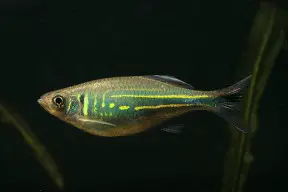
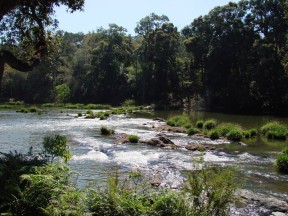

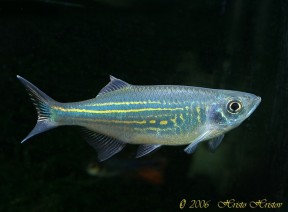
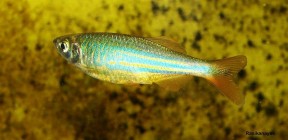

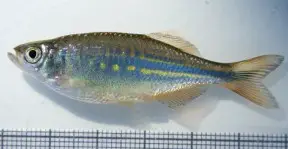
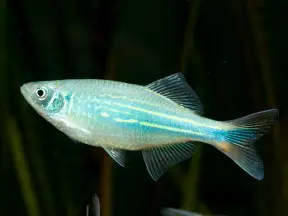

February 5th, 2014 at 9:19 am
Hi, I don’t think the epiteth “malabaricus” indicates a region, so it should be “malabarensis”. The french Word (Jerdon was) “malabar” (see -http://fr.wiktionary.org/wiki/malabar ) means big, fat, hard. Some other fishes like Hoplias malabaricus comes from South America.
February 5th, 2014 at 1:38 pm
Hi, I think ‘Malabar’ in this case is used in reference to the region of southwestern India that is now northern Kerala state, plus some parts of coastal Karnataka. See the etymology section above.